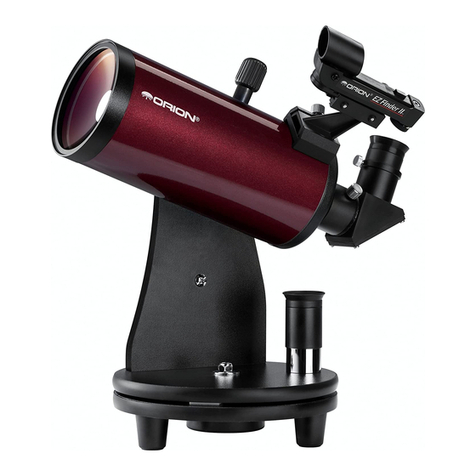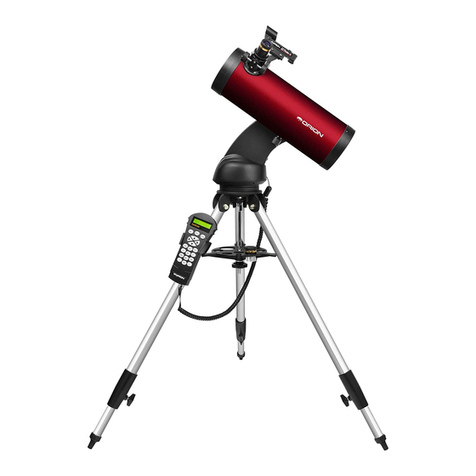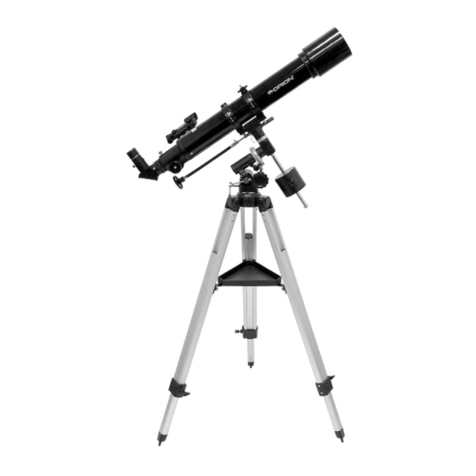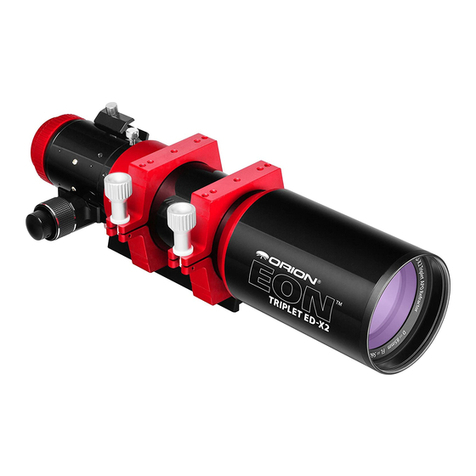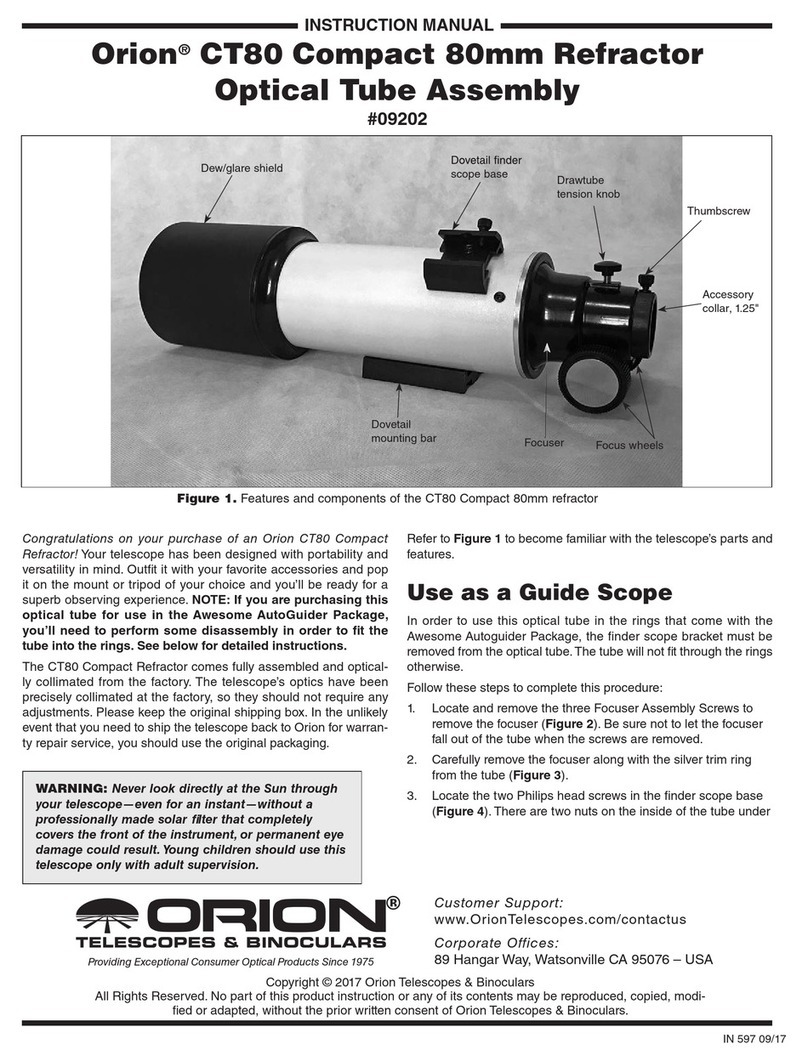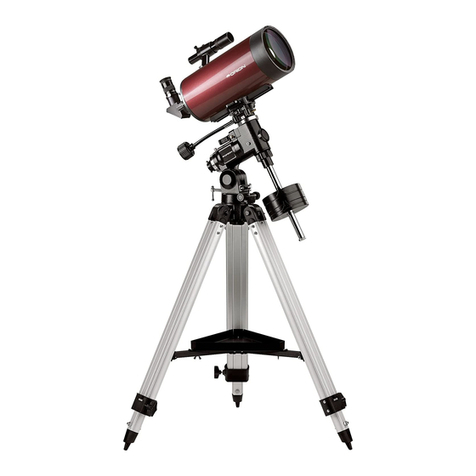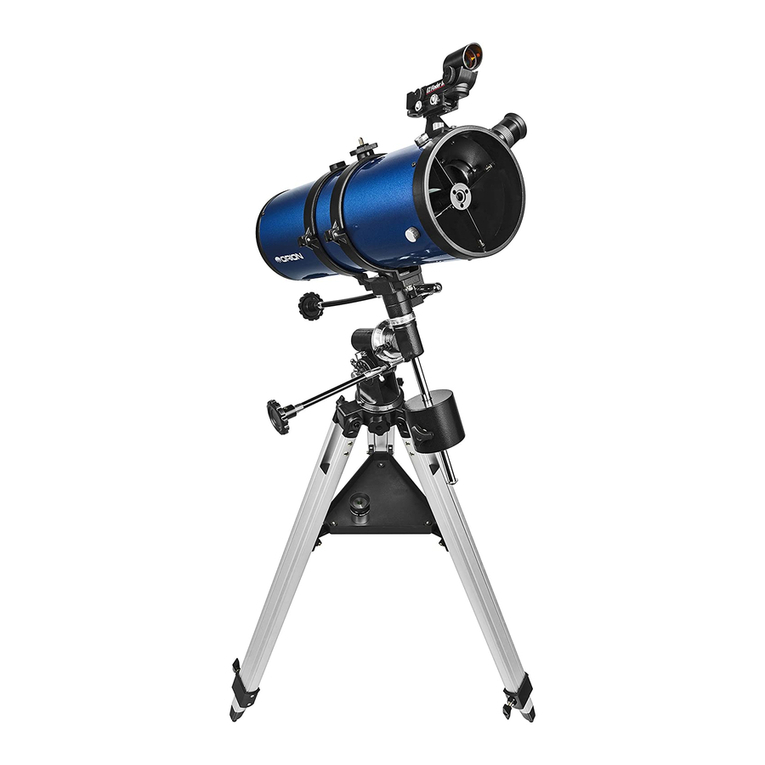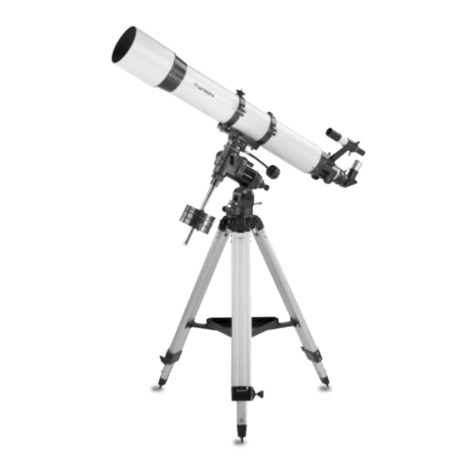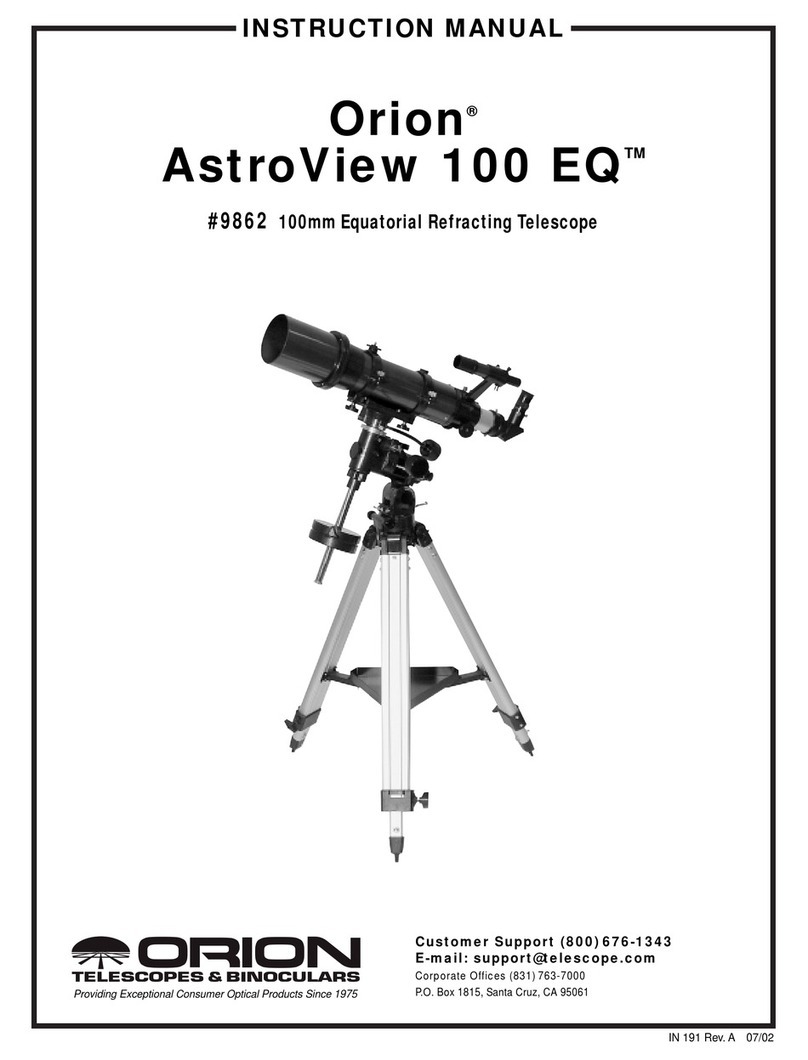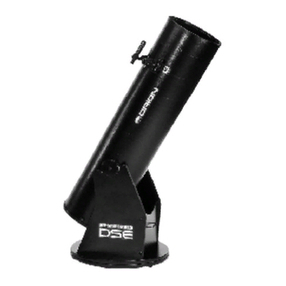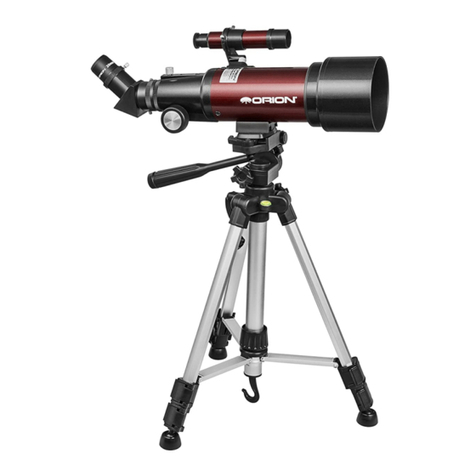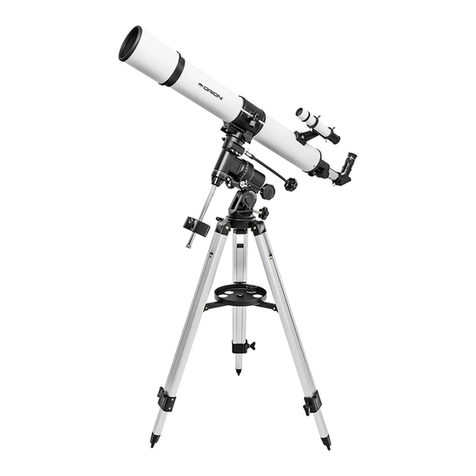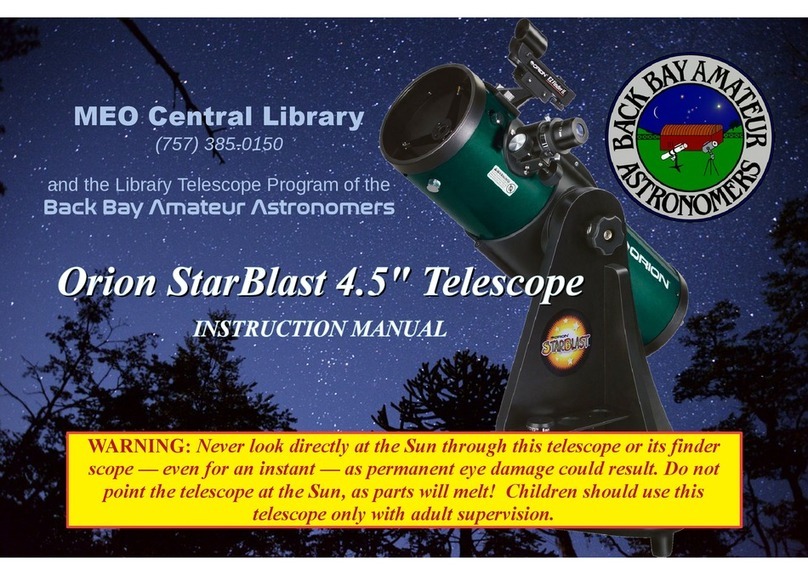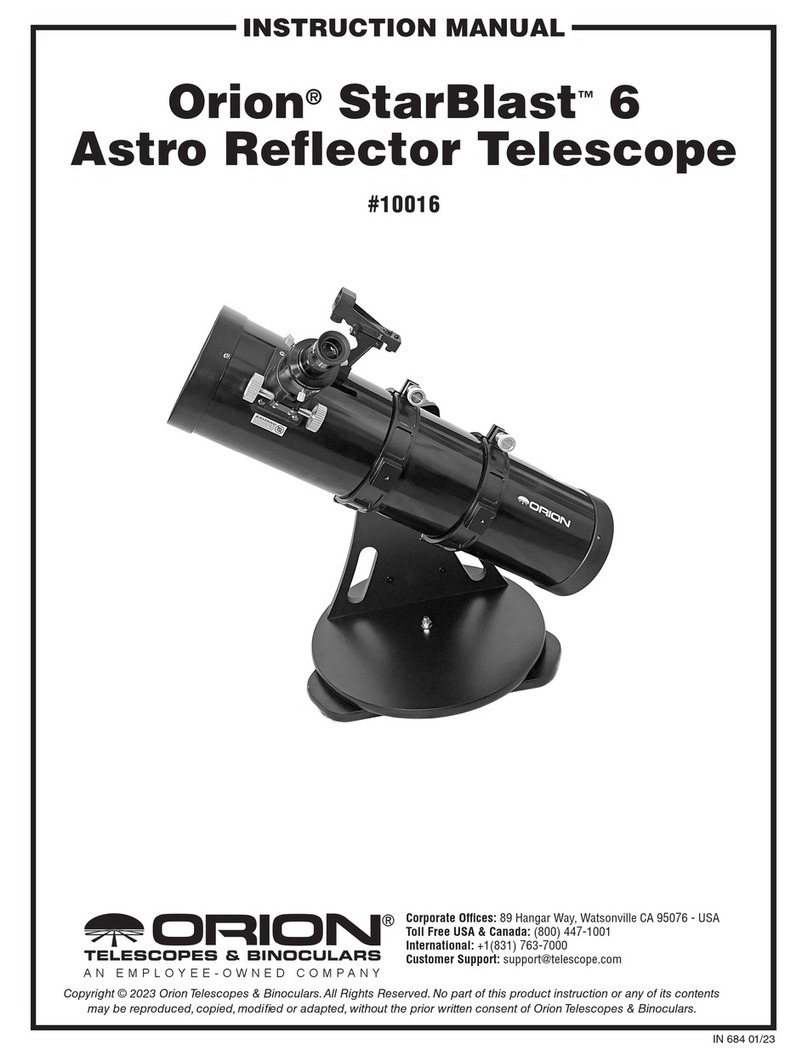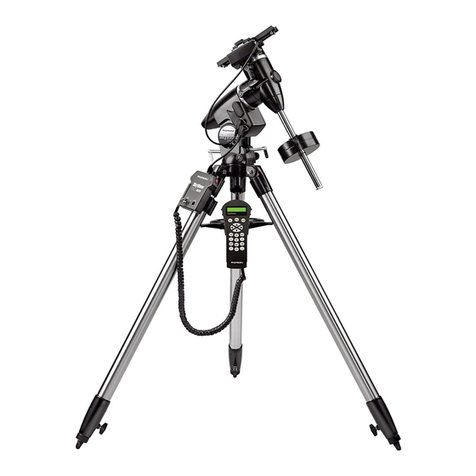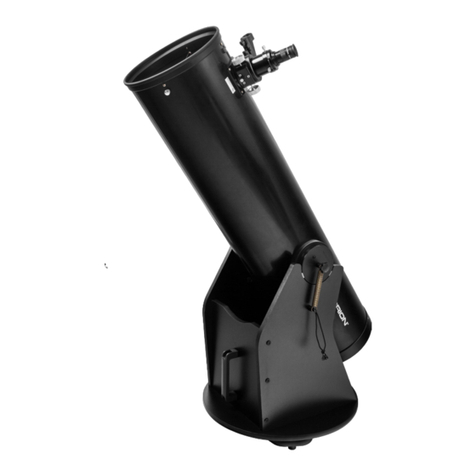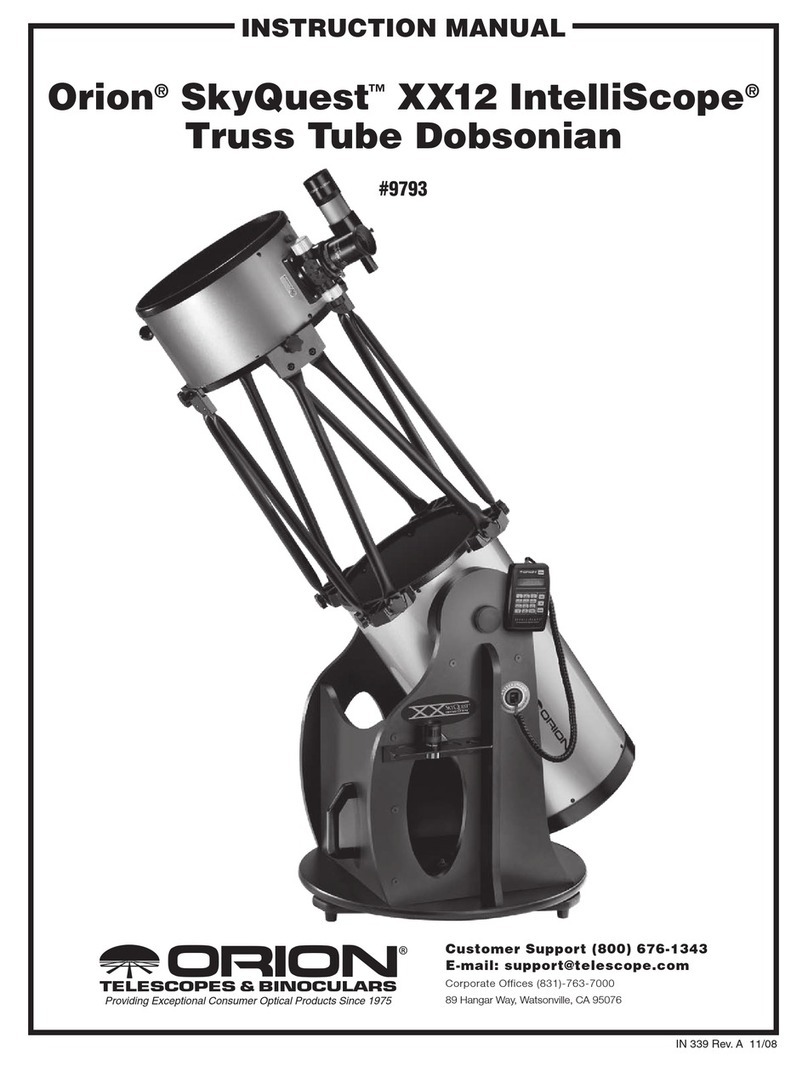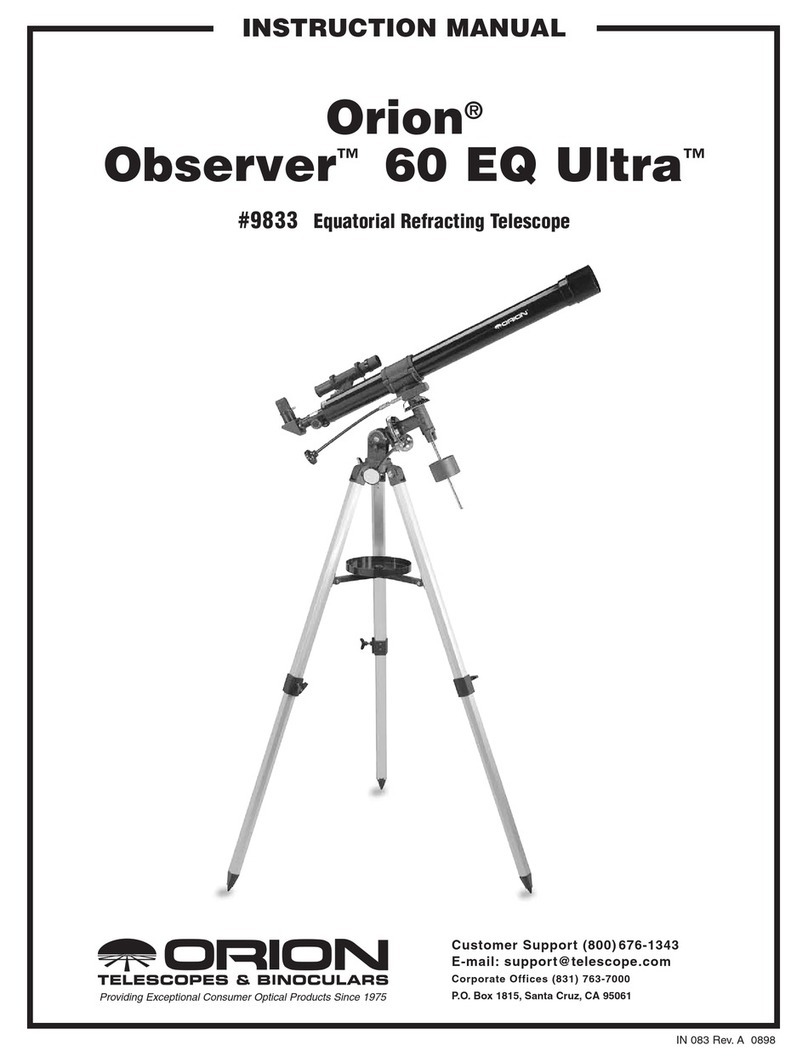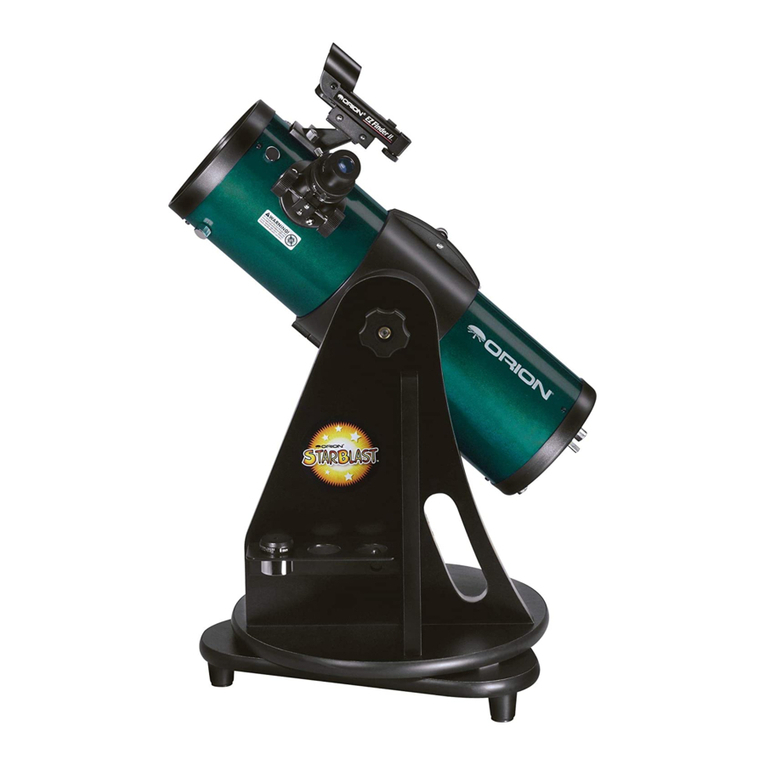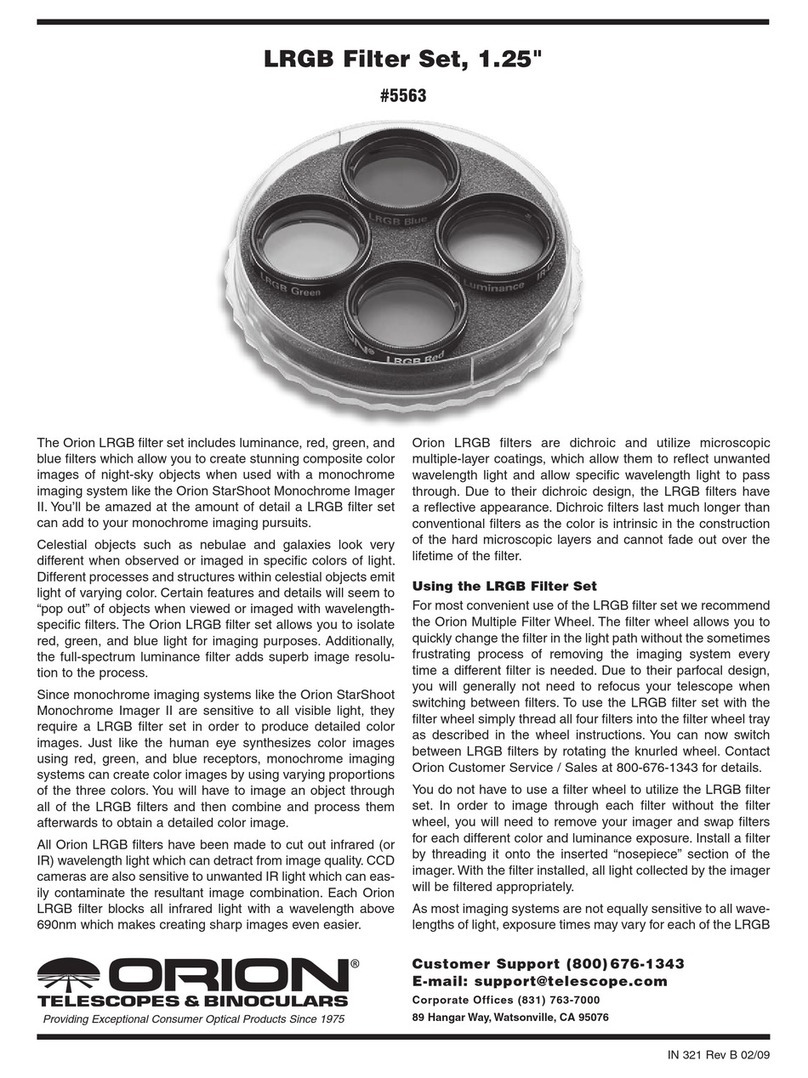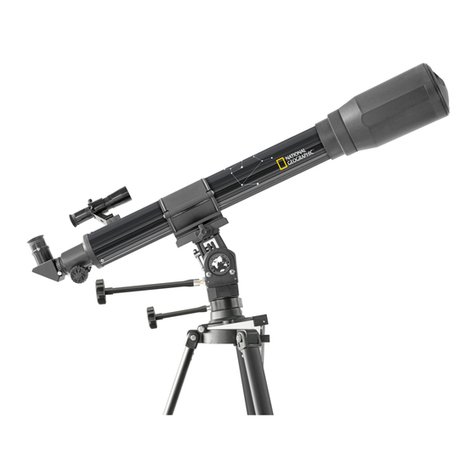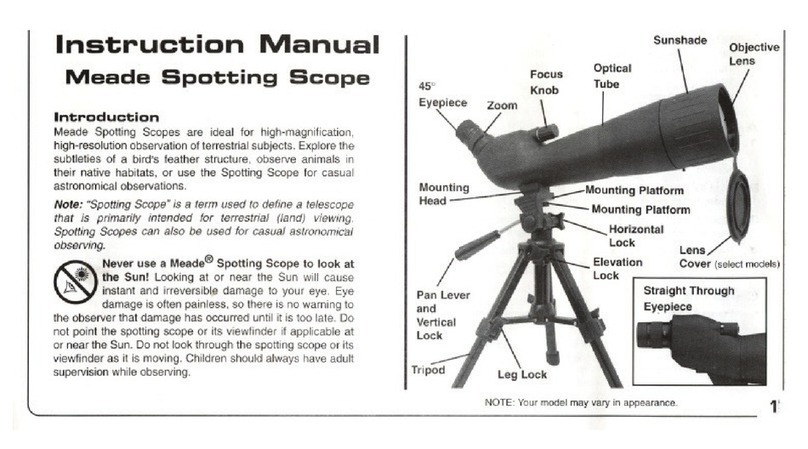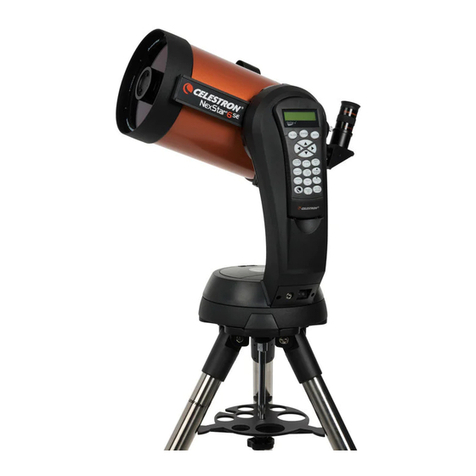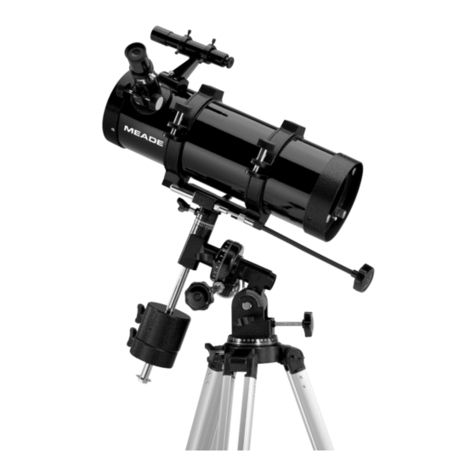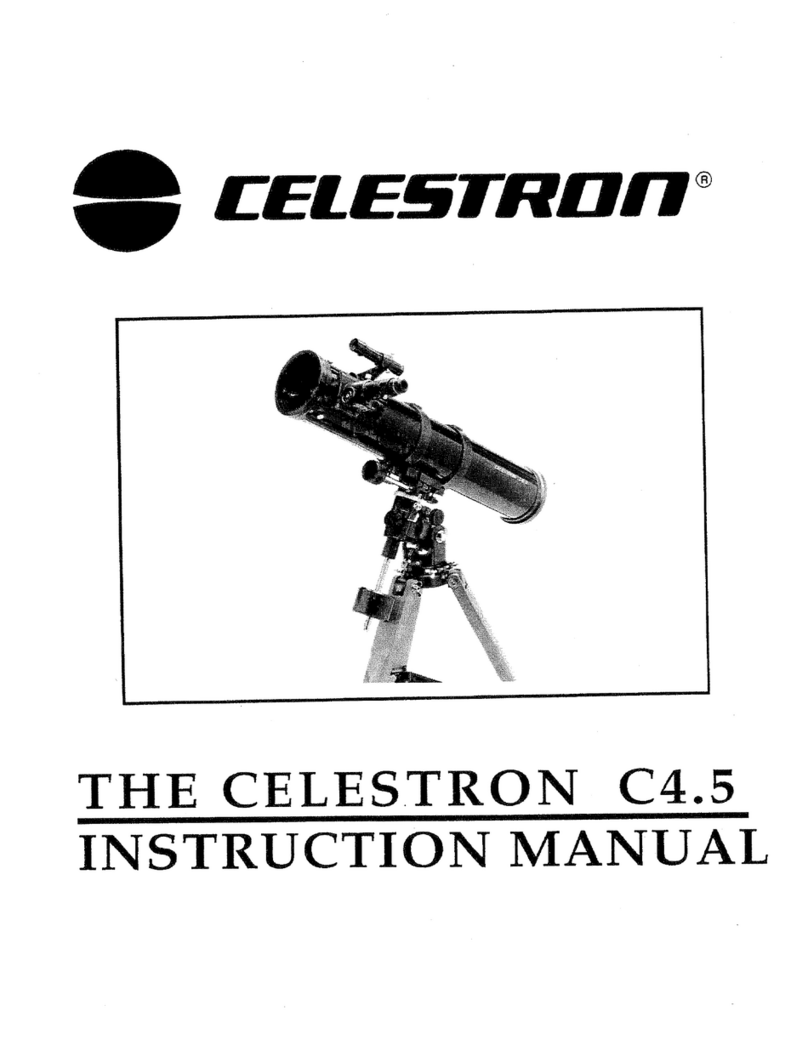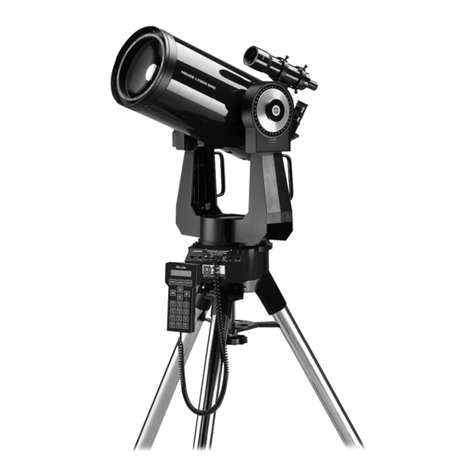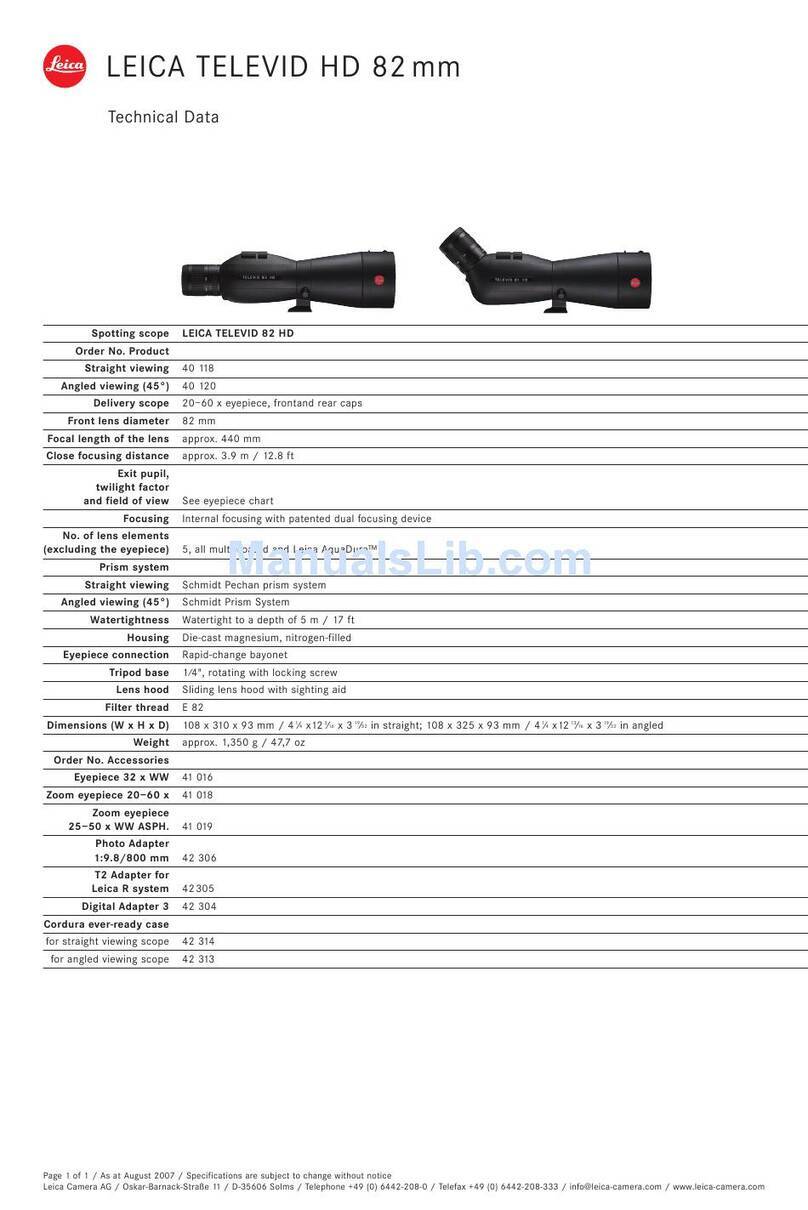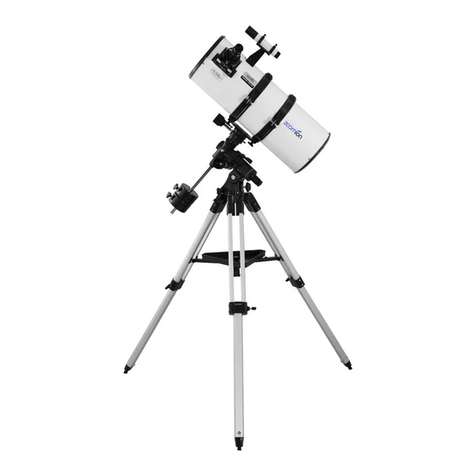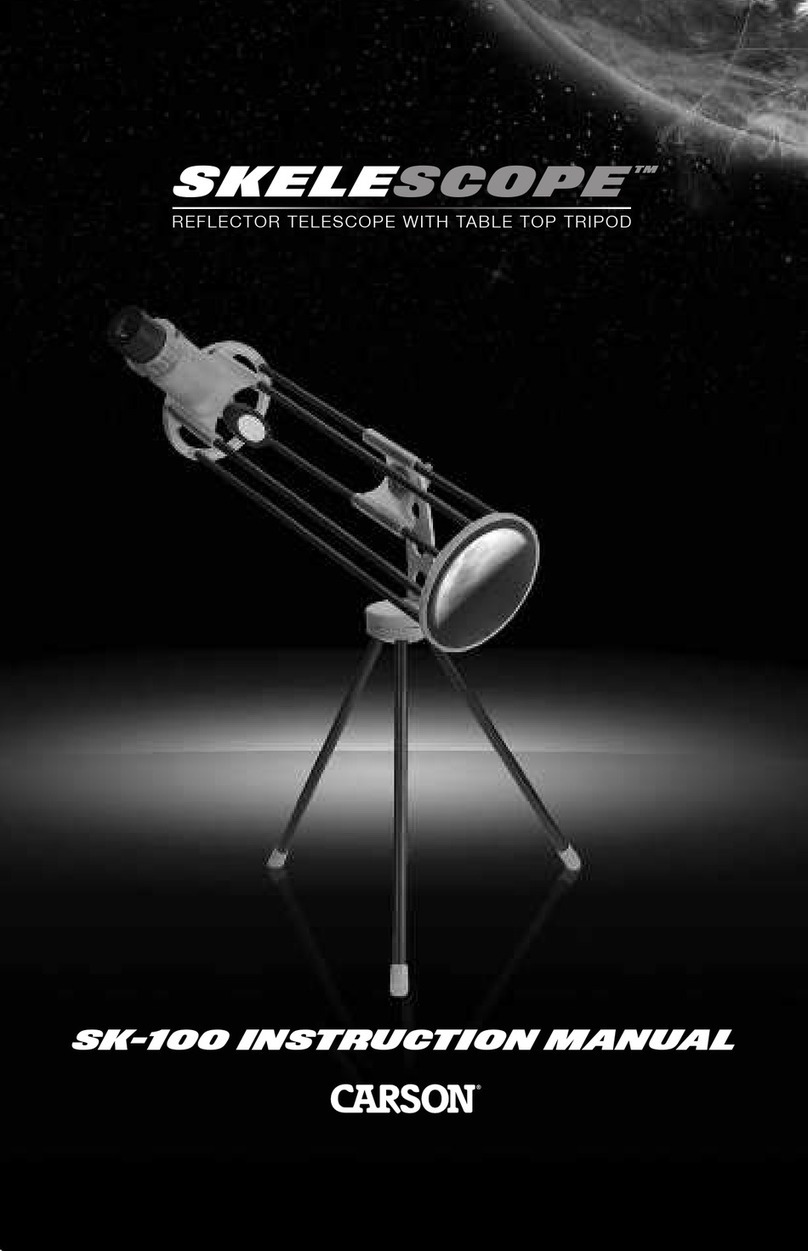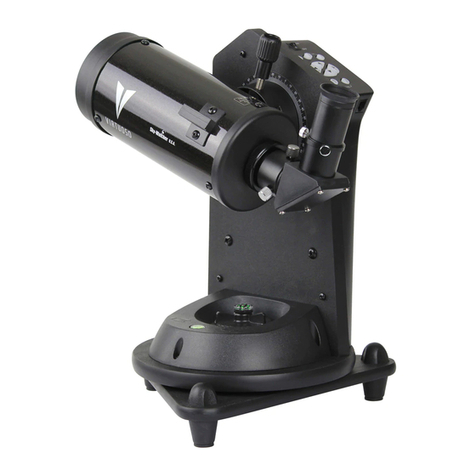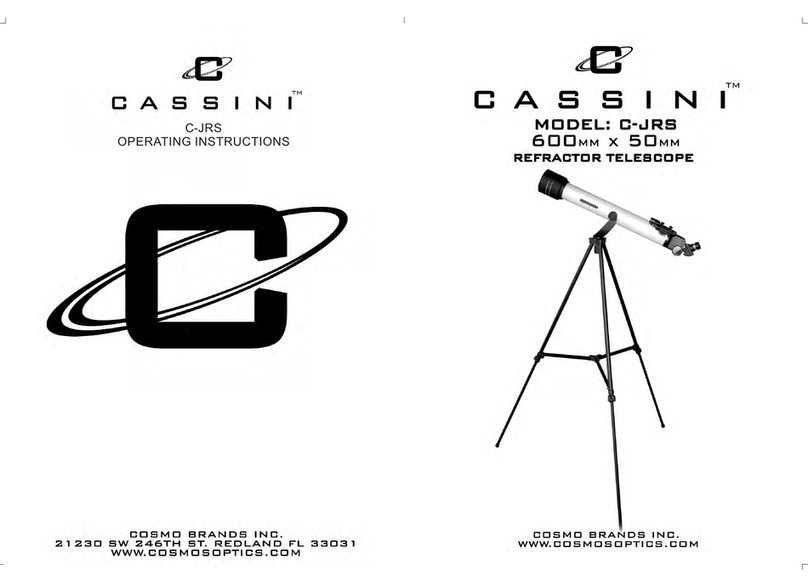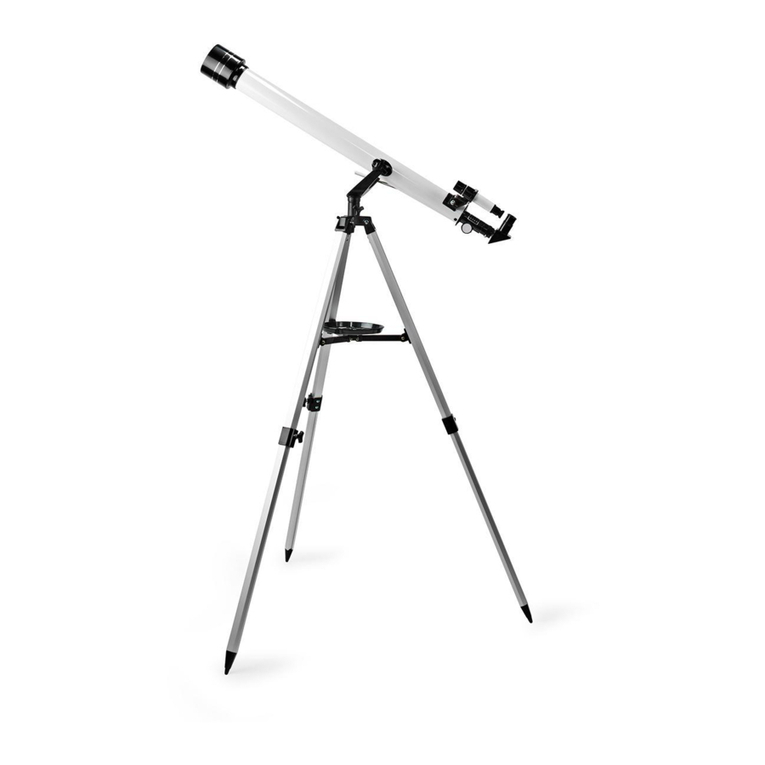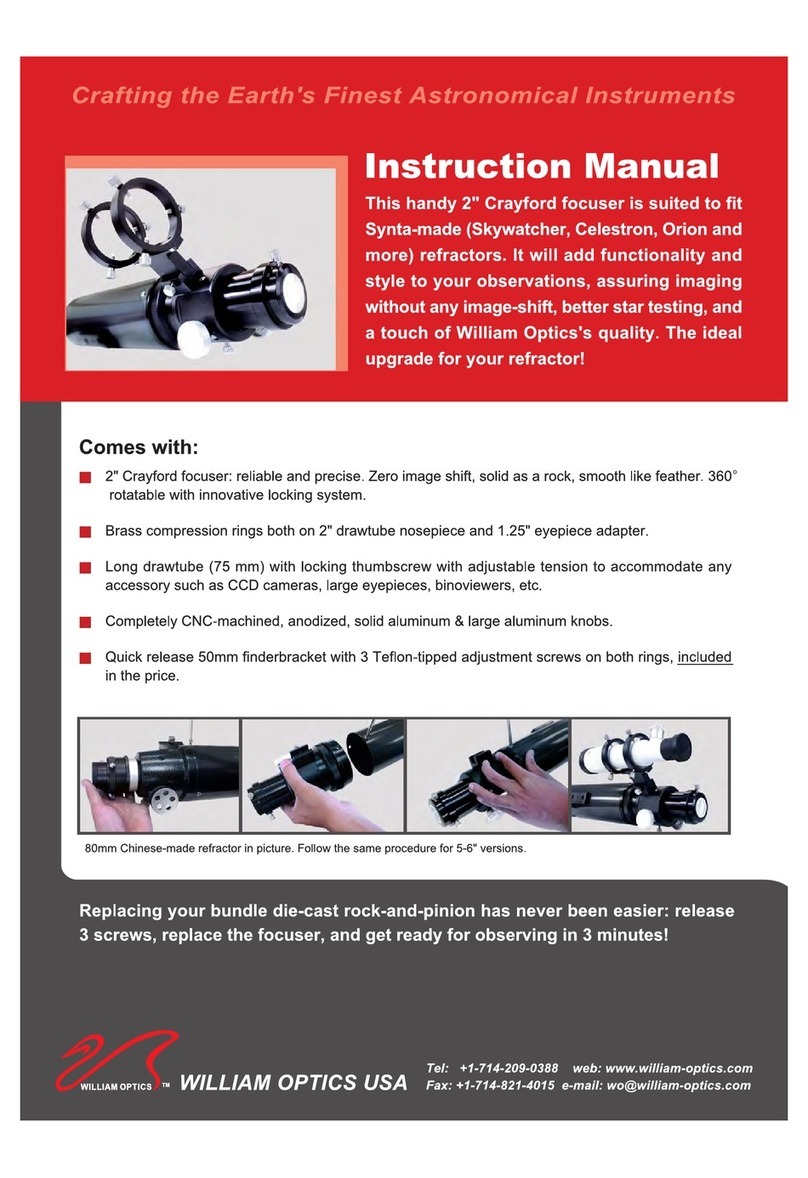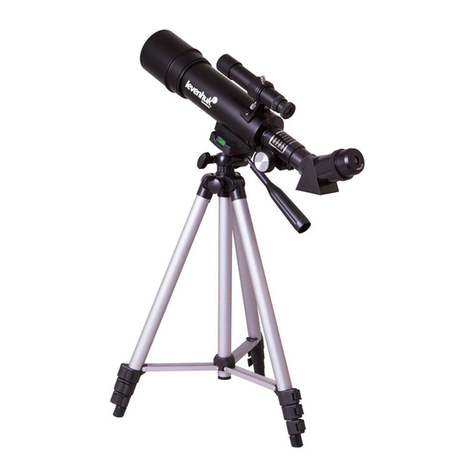
3
so and see what effect that has on the star focus. Once you’ve
achieved the best focus you can get, lightly re-tighten the lock
ring by turning it clockwise while holding the objective lens cell
steady, until the locking ring butts back up against the lens cell.
You’re done!
If you are using a 1.25" nosepiece style camera, and nd that
there is not enough outward focus travel on the objective lens
(if you unthread too far, the objective lens will come off the front
threads of the guide scope body), you can also pull the camera
nosepiece out the back of the telescope by several millimeters.
The best way to achieve focus in this conguration is to reset
the objective lens to around the middle of the thread range,
and then slowly pull the camera out of the 1.25" adapter while
watching focus on your computer screen. When you are close
to focus, lock down the compression lock thumbscrews, and
then adjust the front objective threads to achieve perfect focus.
A 1.25" nosepiece camera does NOT have to be fully seated
in the back of the guidescope. The compression ring (Figure
2) will hold it securely in place even if it is pulled away from
the body of the guidescope as long as there is enough of the
nosepiece wall inserted into the 1.25" adapter to be held by the
compression ring.
Focus range compatibility
The guide scope has a maximum back focus of ~24mm from
the base of the t/c threads, which should help determine if your
own guide camera will be compatible with the StarShoot Mini
32mm Guide Scope. The front objective lens threads forward
another 13mm, so as long as the camera you want to use has
a back focus of between ~11mm to 24mm, it should come to
focus.
Aiming the Mini Guide Scope
The 32mm Mini Guide Scope is mounted in a dovetail bracket
that has six thumbscrews to secure the guide scope tube in
place. Although you probably will never need to adjust this in
order to nd a guide star, you can adjust the direction the guide
scope is pointed within the bracket by alternately loosening
and tightening the three thumbscrews on one of the rings. Just
make sure that all three thumbscrews are tightened before you
begin guiding. Do not over-tighten them, however, or you could
strip the screw threads.
Caring for the Mini Guide Scope
To keep dust from accumulating on the objective lens, keep
the front cap installed when the guide scope is not in use. We
recommend storing the guide scope in a padded accessory
case.
Cleaning the Lens
Although it shouldn’t need cleaning very often, you can clean
the front lens of the guide scope with any quality optical lens
cleaning tissue and optical lens cleaning uid designed for
multi-coated optics. Never use regular glass cleaner or clean-
ing uid designed for eyeglasses. Before cleaning with uid
and tissue, blow any loose particles off the lens with a blower
bulb or compressed air. Then apply some cleaning uid to a
tissue, never directly on the optics. Wipe the lens gently in a
circular motion, then remove any excess uid with a fresh lens
tissue. Oily ngerprints and smudges may be removed using
this method. Use caution, as rubbing too hard may scratch the
lens. Never reuse tissues.
Specifications
Aperture: 32mm
Focal length: 122mm
Focal ratio: f/3.8
Camera interface: 1.25" slip t, t-thread, c-mount thread
Focuser: Helical, front housing rotates
Bracket: Dual ring, with dovetail
Length: Minimum of 5.7" (depending on helical focus position)
Weight: 9 oz. (combined weight of scope and bracket)
